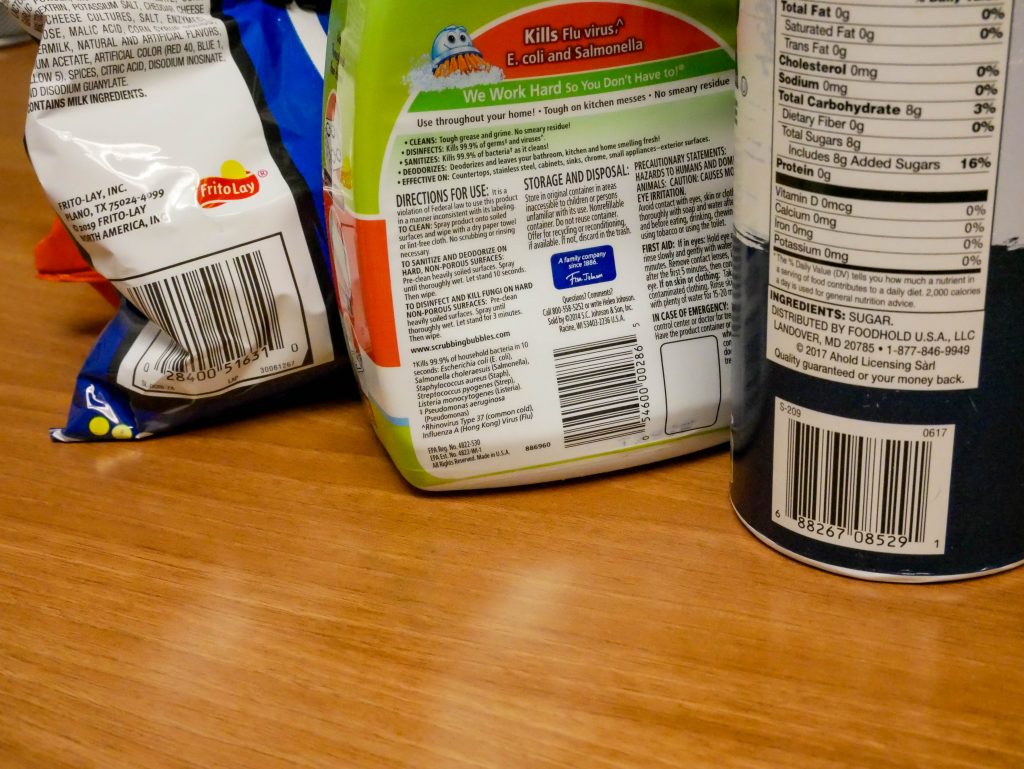
Drexel University prides itself on its designation as an R1 research institute. Many students come to Drexel because they see it as a hub of innovation, stemming from its unique experiential education program and support for research. This unique blend marries the experimental and the practical to result in new technologies and discoveries that the Drexel community can take pride in. Over its 134 year history, Drexel students and faculty have made many notable inventions, some of which you likely use every day without realizing their origins.
Whenever you go to the grocery store, you can thank Drexel alumni Bernard Silver and Norman Joseph Woodland that your checkout is not much slower. Before the 1970s, cashiers would tally item prices on a cash register, then manually add them up to get a total. Silver and Woodland were both teaching at Drexel in 1948 after completing their undergraduate education here when they started working on a solution for automated scanning of product information. Woodland quit teaching in 1949 to work on the technology full-time, and they both filed a patent for the first version of the barcode that same year. In 1951, Woodland started working for IBM and urged them to develop the concept. However, it was deemed infeasible for the technology at the time.
Commercial computers as well as laser technology were becoming more and more sophisticated at the time, and Woodland had the foresight to realize that they would enable a robust and powerful identification system. He continued refining the concept at IBM, and when the necessary technology caught up, he helped George Laurer to write his Universal Product Code proposal which would become the standard for barcodes that we still use today. In 1974, a supermarket in Troy, Ohio became the first to successfully deploy the technology. In 1994, with the advent of digital cameras and image processing, the same idea behind Woodland’s original barcode was employed in two dimensions to create QR codes.
If you have ever tried to use bold or italic text in a YouTube comment, Discord message, Reddit post or Notion document, you have unknowingly stumbled upon a digital standard known as Markdown. Just like the barcode standard, Markdown has been implemented in different ways for different use cases but remains recognizably unique. The web was originally developed to run on HyperText Markup Language, which encodes text formatting (markup) in a way that makes it easy for browsers to render, but not for humans to read the code itself. John Gruber, after studying computer science at Drexel, set out to create a standard that makes markup accessible to any user with just a few sensible keystrokes, like putting asterisks around a phrase to make it bold.
Gruber’s efforts to develop a universal, human-readable markup language were aided by comments and suggestions from Aaron Swartz, a programmer and activist who also helped develop many other digital standards and shaped the digital world as we know it. On his blog, Gruber says that “Markdown is much better thanks to Aaron’s ideas, feedback and testing.” Swartz founded the forum and news aggregation website Reddit in 2005, and it became one of the first adopters of the Markdown standard, allowing users to write all posts and comments using it. Swartz, in 2013, was facing up to 50 years in prison and $1 million of fines in a politically motivated case when he committed suicide by hanging. Gruber described Swartz as having “an enormous intellect — again, a brilliant mind — but also an enormous capacity for empathy.”
Drexel students, faculty and alumni are also responsible for some of the technologies that hold up the back-end of the Internet, and while we may not think of them often, they are crucial to our everyday lives. Paul Baran graduated from Drexel in 1949 and went to work on UNIVAC computers, the first commercial computers in the United States that were invented in Drexel’s backyard at the University of Pennsylvania. In 1959, he joined the RAND Corporation and was tasked with creating computer networks that were robust enough to maintain communication even in the event of nuclear attack. He came up with packet-switching, a technique to split communications up into chunks that are individually sent along possibly different routes and reassembled at the destination.
Baran’s invention enabled huge, volatile networks like the global Internet running on WiFi to be possible and stable. More recently, in 2015, researchers at the Drexel Wireless Systems Lab developed a WiFi antenna technology that is now standard in enterprise-grade WiFi access points and has enhanced their speed greatly. This “smart antenna” is capable of dynamically optimizing which direction it transmits signals to achieve the best performance possible. Its immediate commercial application is a testament to Drexel’s role as a bridge between industry and research.


